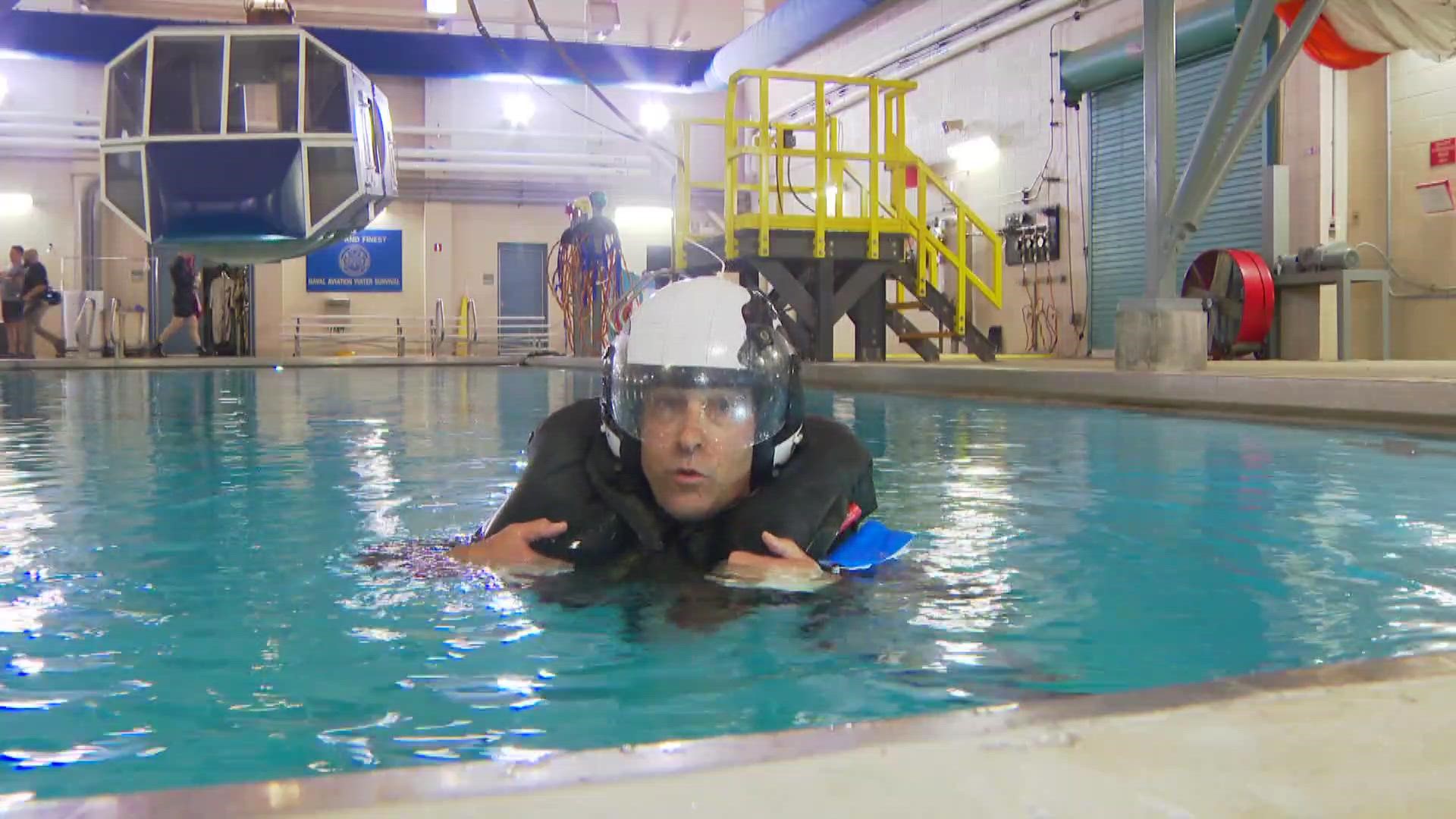VIRGINIA, USA — Naval aviators are among the best pilots in the world, but sometimes emergencies happen, and their aircraft unexpectedly goes down.
If that happens in water, those onboard have seconds to take steps that will significantly increase their chances to survive.
The Navy invited CBS 8 to its base in Norfolk, Virginia, to experience the training sailors go through, and we learned firsthand why practice is so important.
Because helicopters have a high center of gravity, they tend to roll upside down and sink when they hit the water. It happens fast. There's no time to think. No time to panic.
So, every month about 250 students go through intense training at the base’s Aviation Survival Training Center that will hopefully save their life.
Tomas Almeraz is a water survival instructor. He put our CBS 8 crew threw a series of drills designed to help us remain calm when surrounded by chaos. When a jet or helicopter crashes – there can be fire on the water’s surface. He showed us how, by splashing water, we could create a hole to safely lift our heads up and breathe around the flames.
He also talked to us about being in the water fully clothed.
“Our helmets float,” Almeraz said. “Allow the helmet to help you as you come through the water.” On the flip side, boots are heavy and weigh you down. “For someone who has never done it, wearing boots in the water is completely new and different.”
He says the breaststroke is best for conserving energy, and he taught us how to dead float - where our helmet and body keep us at the surface without much effort.
“The biggest mistake people tend to make is overexerting themselves in the water,” he said.
That might be the biggest mistake, but it's not the only one. We had to tread water for two minutes while looking around for rescue boats, land, and hazards in the water.
We were also encouraged to dead float to save energy. After two minutes, Almeraz blew a whistle, and we had to start inflating our flotation vests.
My troubles started when the Velcro surrounding my life preserver was trickier to open than I expected. I used a lot of energy. Then I had to find a plastic tube tucked inside my vest and blow into it, inflating it. But I had a tough time finding the tube, got even more tired, and accidentally drank a bunch of pool water when I started to blow. With the lifeguard keeping a close eye on me, I safely escaped the water but was still out of breath.
Almeraz says what happened to me is pretty common and it's precisely why they have this training in the first place.
“You've never done that before,” he said. “When you get into the muscle memory and the repetition of doing everything - it becomes easier and easier and easier. So even if you inhale some water, you understand what's happening, and you can get past it and continue with your task.”
The navy showed us training they deemed too dangerous for us to try - like what to do when you parachute into water.
And they demonstrated a rescue - simulating a helicopter lowering a basket and lifting the victim out of the water. They even turn on sprayers to simulate rotor downwash. The hope is that practice makes perfect.
“Some people had mishaps and said - I remember back to when I had my training, and it all came back to me and helped me get out,” Alvarez said.
I hope I never have to use my training, but I'm glad I have it, just in case. And I appreciate the Navy giving CBS 8 this chance to glimpse the fantastic work our sailors do every day.
WATCH RELATED: Naval training to keep the world’s most important waterways open, safe (Feb. 2023).

